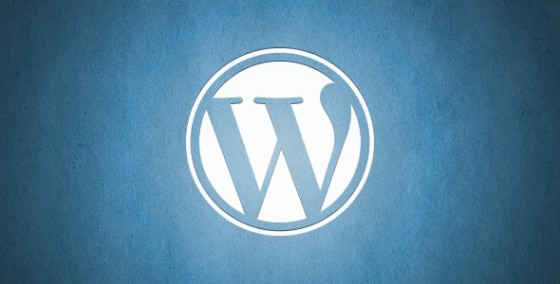Search Engine Optimization, or SEO for short, is an important part of web site design. There is actually a setting in WordPress that lets you shut off, or deny, access to search engines. Unless you want to set up a web page strictly for personal use, family, business and/or friends, it is beyond me why you would do this. In most cases a web site is intended to be shared with the world, along with all your opinions, intelligent insights and of course, all those little tidbits you care to share with your fellow readers.
To name a few, search engines such as Google, Bing, Yahoo and Grok play a vital part in a web site’s success, or failure. It makes sense, then, to pay attention to ways of making your site not only available but easily accessible to search engines. SEO is important if you want to make your site very public and well-known.
All the best SEO practices in the world won’t make up for bad content, but even if bad content is an unfortunate result of your efforts, then search engines are still your friends.
Sad but true, even the best writers publish bad content from time to time. The trouble is it isn’t realized until later– the dirty deed has already been foisted upon the innocent public and the Internet never forgets.
Catch Up
For those who would like to catch up with previous articles in this series, here they are:
- WordPress – How To Have Your Own Web Site – Introduction
- WordPress – How To Have Your Own Web Site – What You’ll Need
- WordPress – How To Have Your Own Web Site – Installation
- WordPress – How To Have Your Own Web Site – Dashboard & cPanel
- WordPress – How To Have Your Own Web Site – Plug-Ins, Widgets, Themes and Headers
- WordPress – How To Have Your Own Web Site – Security
Short List
Mostly, SEO can be accomplished with a few WordPress plug-ins. Here’s a short list:
- Yoast – Yoast is the go-to SEO plug-in for those who wish to not only learn about SEO but apply it as well. Yoast will analyze your content, slugs, excerpts and many other aspects of a post and give you the pluses and minuses where SEO is concerned. There is a free version available for download. This plug-in is the only one I’ve ever used and I’ve never had a desire nor need for any other.
I told you it would be a short list. May I point out that a single item does not a list make– until today, that is… an historical moment and my personal contribution to the Internet!
SEO Tips
Robots.txt File
The Robots.txt file resides in the root directory of your web site on your Hosting provider.
It contains directives that search engines are supposed to obey, such as what directories within your site they may or may not search. It is up to the individual search engines whether they honor these instructions, or not. The major players, such as Google, honor these instructions. If you tell Google not to crawl a particular directory, it won’t. Other more questionable search engines may not be so obliging.
When you first set up WordPress, it creates a default Robots.txt file for you and it may look like this:
—
User-agent: *
Disallow: /wp-admin
Disallow: /wp-includes
—
This tells all search engines (User-agent: *) that they may crawl your site with the exception of the wp-admin and wp-includes folders (Disallow: /wp-admin
Disallow: /wp-includes).
It’s a start but is totally inadequate. At the very least, it should look like this:
—
Disallow: /cgi-bin
Disallow: /wp-admin
Disallow: /wp-includes
Disallow: /wp-content/plugins
Disallow: /wp-content/cache
Disallow: /wp-content/themes
Disallow: /*.js$
Disallow: /*.inc$
Disallow: /*.css$
Disallow: /trackback/
Disallow: /tag/
Disallow: /comments
Disallow: */trackback
Disallow: */comments
Disallow: /*?*
Disallow: /*?
—
If a Robots.txt file exists, then a visiting search engine will read it and, hopefully, obey its instructions. Given free rein, search engines will search every nook and cranny of your web site. That’s what they do. It’s their job. Put simply, they don’t have any business crawling certain areas of your web site. All you really want them to do is search through your all-important articles and images. You dont’ need them displaying to the world every bit of information about your site’s infrastructure. In fact, that is a terrible security oversight.
In the revised Robots file, you can see that many more directories and file types have been added and thereby denied access to search engines.
You can edit the Robots.txt file just like any other text file. Notepad works perfectly for this simple task. Once you have saved your changes, use your favorite FTP client to upload the altered file to your server.
Note: It wouldn’t hurt to add a link to your sitemap.xml file, too. That way, search engines will know exactly where to find it without hunting. See below for more Site Map information.
Time Zone
WordPress defaults to the Universal Time standard (UTC).
For those who may be interested –
Prior to 1972, this time was called Greenwich Mean Time (GMT) but is now referred to as Coordinated Universal Time or Universal Time Coordinated (UTC). It is a coordinated time scale, maintained by the Bureau International des Poids et Mesures (BIPM). It is also known a[s] “Z time” or “Zulu Time”. ~ Source – National Hurricane Center
The whole point is so WordPress “knows” what time it is in your neck of the woods. This is important from an SEO perspective. For example–
If you live in Australia and post an article at noon on the 25th of whatever, what day is it in Wisconsin? Probably the 24th. This will mess up search engines and they may not realize you have posted new articles. Not good… you definitely want them to have this information in a timely fashion. (Sorry for the pun)
You can make this simple and important change within WordPress under the Settings–>General menu option.
Update Services – Pinging
WordPress lets others know when you have posted a new article. It does this via a method known as “pinging”. Yep– just like the Tom Clancy submarines. Unfortunately, it doesn’t understand the concept of “one ping only”, that critical bit in “The Hunt For Red October”. (One of my favorites, incidentally.)
Every time you save/update a draft, WordPress happily obliges in a simple-minded manner by sending out another Ping. This might be deemed as Ping SPAMMING by the recipients and you definitely don’t want that to happen. Their unfortunate response may be to block you.
My personal habit is to save drafts at a frequent rate. I do this to avoid the possible catastrophe of losing everything because of a power outage or web site failure. In fact, I’m about to click that Save Draft Button right now. ![]()
There is a great WordPress plug-in that will rectify this inane behavior. Oddly enough, it is called WordPress Ping Optimizer. Imagine that.
The Ping List that WordPress uses can be found in the back-end menu here: Settings–>Writing
You can get the most recent list at the WordPress.org Site.
Simply copy and paste. Don’t forget to save your changes.
Sitemaps
Sitemaps make the life of both search engines and your readers much easier. Sure, your readers can hunt and peck for hard-to-find articles on your site, but a Site Map makes this frustrating problem go away.
Search engines like Site Maps, too. They will read it, if one exists, and thereby know where to look for stuff. It is also a good way to keep them up-to-date when you publish a new article. Add a link to your Robots.txt file (see above) to make things even easier for search engines to navigate your site. It behooves you to help them in any way you can.
There are many sitemap generator plug-ins that will do the trick. The one I use and recommend is Google XML Sitemaps which can be found in the WordPress.org Plugin Directory.
Google, Google, And More Google
- Google Analytics http://www.google.com/analytics/
- Google Webmaster Tools http://www.google.com/webmasters/tools/
- Google AdSense http://www.google.com/adsense/
The above three links will take you to Google Analytics, Google Webmaster Tools and Google AdSense. If you care the least about being visible on the World Wide Web, then you must acknowledge that Google is king. Bing and Yahoo are the next big contenders and should not be ignored, either.
Google is omnipresent. It has infiltrated the Internet to such a point where it may be seen by some as the Internet. I can’t think of a single aspect of the Internet world where it has not at some point in time found a niche.
If you want a presence on the web, set up a Google account, go to the above links, and learn all you can about these very useful tools. You might even make a couple of bucks along the way. Only a couple…
Once you have done that, go to the Bing and Yahoo sites and do the same. Be prepared for a long learning curve. I did mention that running your own web site was a time-consuming task, didn’t I?
Search engines have become the life-blood of the WWW. It should be a priority in your mind to understand how they work and what they look for to rank you higher in the monstrous and ever-growing list of web sites you’ll be vying with.
Plans for future articles:
- Perhaps Some Tweaks – you know how I love those
- Anything else that comes to mind along the way
Links to articles in this series:
- WordPress – How To Have Your Own Web Site – Introduction
- WordPress – How To Have Your Own Web Site – What You’ll Need
- WordPress – How To Have Your Own Web Site – Installation
- WordPress – How To Have Your Own Web Site – Dashboard & cPanel
- WordPress – How To Have Your Own Web Site – Plug-Ins, Widgets, Themes and Headers
- WordPress – How To Have Your Own Web Site – Security
- WordPress – How To Have Your Own Web Site – SEO
- WordPress – How To Have Your Own Web Site – Tweaks for Speed – Part I
- WordPress – How To Have Your Own Web Site – Tweaks for Speed – Part II
Conclusions
The trick to running a successful web site is to be prepared to spend the rest of your life learning stuff. Things you may have never thought of before will become very important to you. Each little thing you learn will spawn yet another learning project. It never ends and I think that is a good thing. Imagine how boring life would be without new things happening.
There are gazillions of tools, plug-ins, and utilities specifically geared for use with WordPress. Use and abuse them to the fullest extent possible and learn as much as you can, all the time.
The aforementioned recommendations are but a small number of suggestions to help you get started. The full list is vast and convoluted, and should be traversed in an intelligent fashion. Be wary of magical “fixes” that you may encounter along the way. My strong suggestion is to approach every plug-in with caution. Research their user ratings and update history, and if you have even the slightest bit of hair rising on your neck, don’t install it. Find something else that you trust.
Oh! And don’t forget to write a lot of great articles, too,
Richard
—




